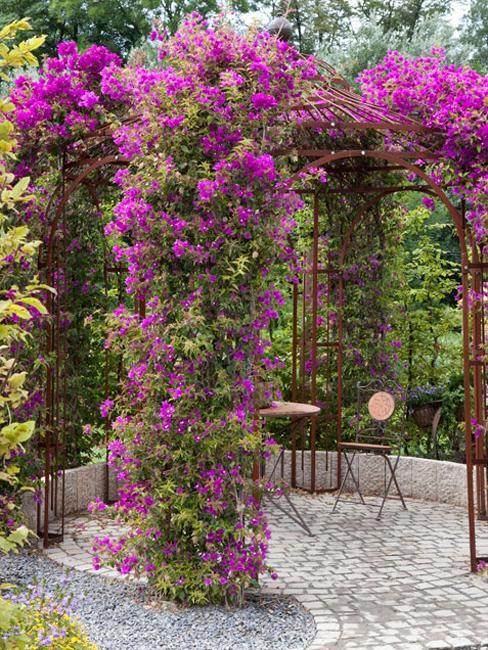When it comes to enhancing the beauty of your outdoor space, flower decorations can have a transformative effect. Whether you have a cozy balcony, a spacious garden, or a quaint patio, incorporating flowers can breathe life into your environment. Having spent years experimenting with various outdoor flower arrangements, I’ve compiled a comprehensive guide that not only showcases beautiful designs but also provides practical tips to help you create your floral paradise.
Benefits of Outdoor Flower Decorations
Before we delve into design ideas and tips, let’s explore the myriad benefits flowers bring to your outdoor areas:
- Aesthetic Appeal: Flowers add splashes of color, creating a vibrant and inviting atmosphere.
- Improved Mood: Studies show that being surrounded by nature and flowers can uplift your spirits and reduce stress.
- Environmental Impact: Plants and flowers promote biodiversity, attract pollinators, and contribute to a healthier ecosystem.
- Increased Property Value: Well-decorated outdoor areas can significantly increase the value of your home.

Choosing the Right Flowers for Outdoor Decorations
The selection of flowers depends on several factors, including climate, location, and personal aesthetics. Below are some popular flower options along with their characteristics:

| Flower | Color | Bloom Time | Sun/Shade Preference | Care Level |
|---|---|---|---|---|
| Marigold | Orange, Yellow | Summer to Frost | Full Sun | Easy |
| Petunia | Variety | Spring to Fall | Full Sun | Moderate |
| Dahlia | Variety | Summer to Fall | Full Sun | Moderate |
| Lavender | Purple | Spring to Summer | Full Sun | Easy |
| Hydrangea | Blue, Pink, White | Summer to Fall | Partial Shade | Moderate |
Factors to Consider When Choosing Flowers

Climate and Hardiness Zones
Understanding your local climate and hardiness zones is crucial in selecting the right flowers that can thrive outdoor conditions. Check the USDA Plant Hardiness Zone Map to determine which flowers will thrive in your area.
Sunlight and Soil Type
Evaluate the sunlight and types of soil in your outdoor space. Some flowers prefer full sun while others thrive in partial shade. Conduct a soil test to determine the pH and nutrient levels, ensuring you choose flowers that will flourish in your environment.

Creative Outdoor Flower Decoration Ideas
Let’s dive into some exciting outdoor flower decoration ideas to help you create a stunning floral display.

1. Container Gardens
Container gardens are perfect for small spaces and add visual interest to patios or balconies.
- Variety: Combine multiple species in one container for variation.
- Mobility: You can easily move containers around to change the look or protect flowers from severe weather.
Pros and Cons of Container Gardens

| Pros | Cons |
|---|---|
| Space-effective | Requires more frequent watering |
| Customizable | Limited root space for plants |
2. Hanging Planters
Utilize vertical space by installing hanging planters. These can add depth and dimension to your outdoor area.
- Creative Arrangements: Experiment with colors and shapes in different hanging containers.
- Space Saving: Perfect for small gardens or balconies.

3. Flower Borders and Edging
Creating flower borders can define pathways and separate different outdoor areas. Use perennial flowers for a low-maintenance option that returns year after year.
4. Floral Arches and Trellises
An archway or trellis adorned with climbing flowers such as clematis or morning glory adds a romantic touch to your outdoor space.
5. Seasonal Displays
Change your flower arrangements according to the season. Spring tulips, summer petunias, fall chrysanthemums, and winter evergreens can keep your decor fresh all year long.
DIY Outdoor Flower Decoration Projects
If you’re feeling crafty, here are some DIY flower decoration projects you can try:
1. Painted Flower Pots
Get creative by painting your flower pots with vibrant colors or patterns. This simple touch can enhance the overall look of your flowers.
2. Flower Wreaths
Make beautiful flower wreaths for your front door using either fresh or dried flowers. It’s a delightful way to welcome guests and showcase your floral flair.
3. Mason Jar Centerpieces
Use mason jars as unique vases for small flower arrangements. This rustic charm can add a cozy touch to your outdoor dining area.
Maintaining Your Outdoor Flower Decorations
To ensure that your flowers remain vibrant and healthy, consistent care and maintenance are key.
Watering Wisely
Different flowers have different watering needs. Always check the soil moisture before watering, and it’s generally advisable to water in the early morning or late afternoon.
Fertilizing
Utilize organic fertilizers to promote healthy growth. Make sure to follow instructions for the best results, as over-fertilizing can harm plants.
Pest Management
Regularly inspect your flowers for pests and diseases. Natural remedies like neem oil or insecticidal soap can be effective solutions.
Conclusion
Creating stunning outdoor flower decorations is not just about aesthetics; it’s a way to connect with nature and express your creativity. Whether through container gardens, hanging planters, or DIY projects, the right floral arrangements can elevate any outdoor space. As you embark on your floral journey, remember that patience is key, and the joy of watching your flowers bloom is well worth the effort.
FAQs About Outdoor Flower Decorations
What are the best flowers for outdoor decorations in shaded areas?
Some excellent options include hostas, ferns, astilbes, and impatiens, as they thrive in low-light conditions.
How often should I water my outdoor flowers?
Watering frequency depends on the type of flowers, climate, and soil conditions. Generally, it’s best to check moisture levels daily and water as needed.
Can I decorate my porch with flowers year-round?
Yes! Opt for seasonal flowers and hardy plants that can withstand different weather conditions, such as pansies in early spring and ornamental kale in the fall.
What types of containers are best for outdoor flowers?
Choose containers made of materials such as ceramic, plastic, or wood that have drainage holes to prevent waterlogging.